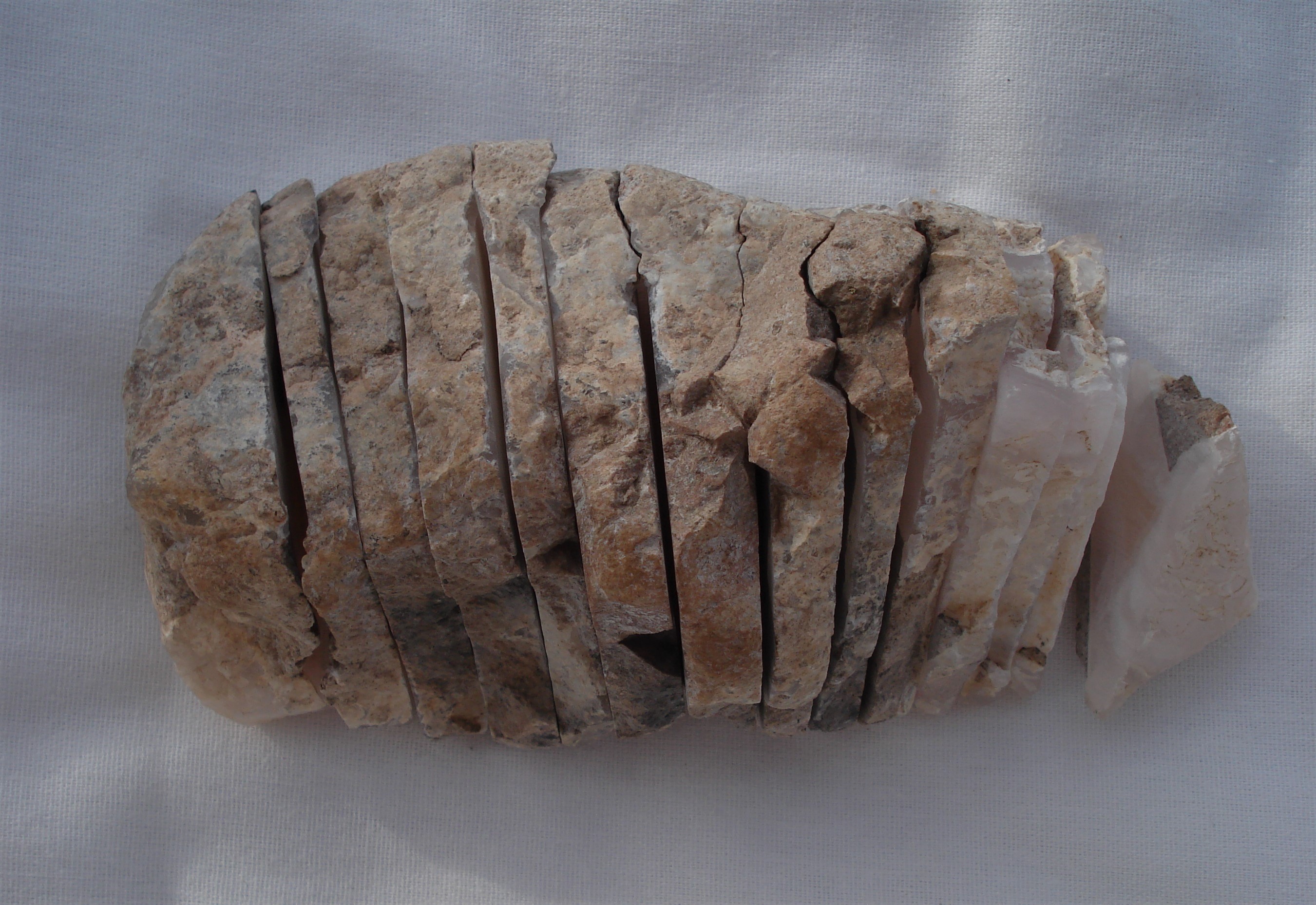Linda Hilton
Reader, Writer, Merciless Reviewer and Incurable Romantic
Bots and Spammers are routinely purged.
Currently reading
Rocks -- Befores and Afters (pic heavy!)
Murder by Death asked about some before and after pictures of the rocks I collect, cut, and turn into jewelry. As it happened, I had some examples handy because I had them out for the studio tour last week. And I love love love talking about rocks!
First is an example of what they look like in the wild.

Looks like a plain rock-colored rock. But at the right-hand edge, you can sort of see . . . something.

Though it's rough and broken, it's kind of quartzy-looking, but with a somewhat waxy consistency. So you turn it over some more . . .

And what you have is a banded agate. Or at least part of one. The banding isn't clear in this particular piece because the edge is all broken and dirty and rough. This was part of one of my estate lots, so I have no idea where it came from, but agates like this are very common around here and pretty much anywhere there's been volcanic activity. They aren't directly volcanic in origin, but form from water that seeps through volcanic material to dissolve the silica minerals and then deposit them in empty pockets. I know, I know, TMI. ;-)
This is another rock, one I did find, that I cut to make sure a new saw blade was installed properly. I knew the rock was mostly the volcanic ash matrix the agates form in, but with a crust of chalcedony on one side.

You can kind of see the chalcedony -- that waxy-looking quartzy stuff -- on the end, though the other side shows it more clearly.

As with the first example, the inside is what matters, and I was pretty stunned when I cut this one. I wasn't expecting anything very exciting.


In the picture directly above, you can see the matrix on the right hand side of the slice. I usually have to trim this off with either the saw or an old pair of side-cutter pliers. It's fairly porous and somewhat easy to remove most of the time, but it can be very difficult on occasion. And it will not polish.
To give a better idea of the size, since this is larger than the little purple pieces I cut the other day, here it is with my favorite (and only!) Arizona quarter.

I did a little enhancement of these photos to try to bring out the patterns in the agate/chalcedony parts, but the truth is that when they're dry, they don't show up very well.

Upper left above is a slice of lavender sagenitic agate from the Sheep Crossing north of Phoenix. Lower center is from Brenda. The other three are from the Chickenman place. ;-) They've been cut on the saw, tossed in kitty litter to get the oil off, then washed in water and dish detergent.
These next two show how dirty the little cavities can be. Some of this is ordinary mud that gets into them over the years/centuries that they're out in the desert, if they have an opening that mud and water can get through. Some of it is hardened ash that got in when the agates were forming. That stuff has to be dug out with a dental pick, and sometimes it just plain won't come out.


After they go in the tumbler for six or seven weeks, the rough edges get ground off and rounded, and the exterior surface polishes to a nice glassy shine. Much of the time, those little cavities turn out to be filled with tiny, tiny sparkly crystals, and they tend not to be affected by the tumbling process. But I'm not good at capturing them with the camera!

In the shot above, the stone on the far right has a little depression filled with those tiny crystals, but they wouldn't sparkle for the camera.
Because the stones are unique, it's actually not hard to match up a before and an after picture of the same stone. Later today or tomorrow, I'll get some more shots of a few individuals so we can have a reference for particular befores and afters. But the middle stone above came from a piece of rough that is actually still sitting by the saw. I'm not sure what I'm going to do with it.


I hope this helps, MbD! More to come anyway. . . .
















 5
5
 6
6